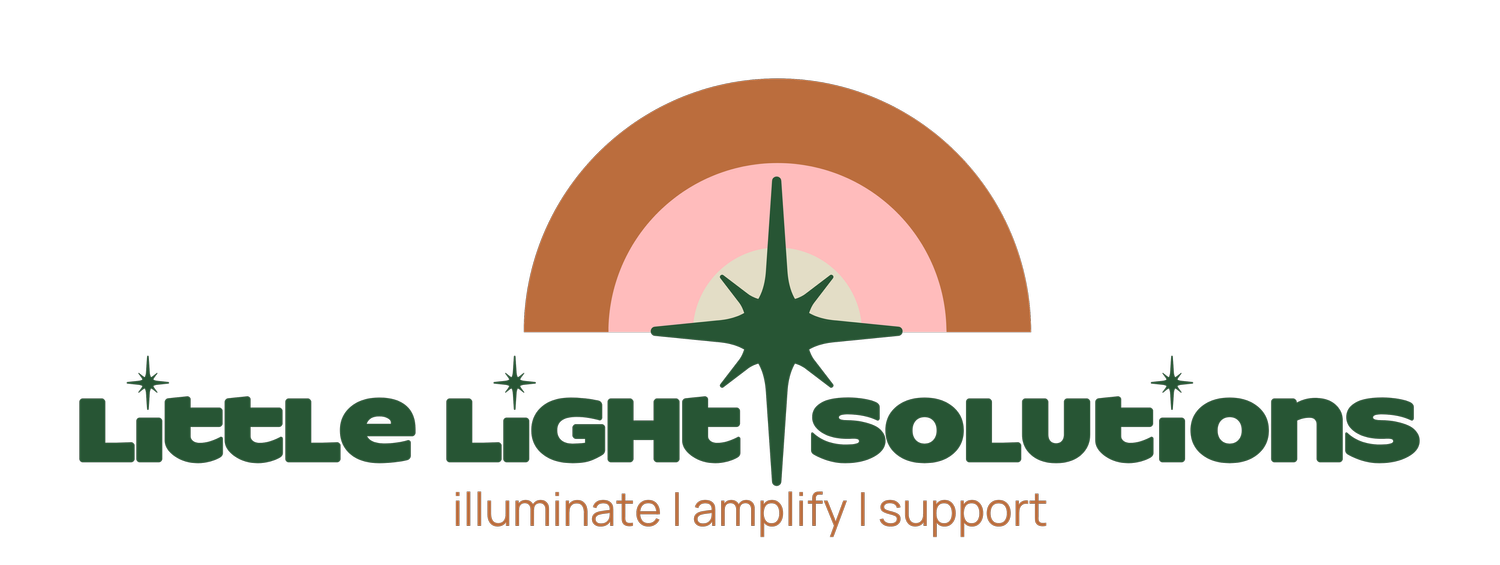Organizational Change Checklist for Small Businesses
introduction
Hey there! We know that making changes in a small business can feel overwhelming. Where do you start? How do you decide what to change and when? How do you ensure success? Don’t worry – at Little Light Solutions, we’ve created a checklist to guide you through the process, making sure you’re thoroughly prepared. With a bit of planning, you’ll find the journey much smoother, ensuring a better experience for everyone involved.
identify the Need for Change
Let’s start by identifying the most impactful process in your business – the one that, if improved, would have the biggest positive effect. It might feel daunting to make significant changes, but these are often the most necessary and can lead to amazing results. Ask yourself:
What process takes up most of our time (managers, employees, clients/customers)?
Which process causes the most daily frustration?
What process often results in income loss due to mistakes, whether directly or indirectly?
Which process do you/your employees dread the most?
Once you’ve figured out what needs to change, think about your goals. How will the new process feel? How will it positively impact your business? Having clear objectives helps keep everyone on the same page and excited about the change.
Planning and Strategy Development
Planning might seem like a lot of work, but it’s a lifesaver in the long run. Mapping out your timeline, setting key milestones, and giving yourself some wiggle room for unexpected challenges can make all the difference.
Think about who will be affected by the changes. It’s essential to involve your key stakeholders early on. Managers, employees, and clients/customers should all have a chance to share their feedback and ideas. Their input can make the transition smoother and more effective – and it helps everyone feel valued and heard.
Communication Strategy
Clear and consistent communication is key. Plan how and when you’ll share information about the changes with your stakeholders. Whether it’s through meetings, newsletters, social media posts, emails, or other methods, keep the lines of communication open.
Make sure you’re also open to receiving feedback. Trust your team to offer valuable insights and develop a plan for collecting and addressing feedback throughout the process.
training and Support
Providing thorough training for your new process is crucial. Document every step, even those that seem like common sense. Include visual aids like screenshots or photos to cater to different learning styles. Be prepared to walk through the steps one-on-one with management and trainers to ensure they feel confident in helping others.
Support systems can help reduce mistakes and misunderstandings during the rollout. Regular check-ins and access to communication platforms like WhatsApp groups can be beneficial. Don’t forget to use any training materials provided by new software or platforms you’re using.
implementing the Change
Before fully implementing the change, test it on a small scale. This could be a pilot program or a trial period. Change can be challenging, but trust the process and be prepared to handle whatever comes your way. Remember, every step forward is a step towards a brighter future.
monitoring and evaluation
Track the progress of your project using key metrics. Are times being reduced? Is income increasing? Are mistakes decreasing? Give yourself 1-3 months of consistent tracking to determine success.
Collect feedback from stakeholders. Their insights can help you adjust the process as needed. Be flexible and willing to make changes based on feedback.
addressing Resistance
Change can be unsettling for some, so be prepared for resistance from stakeholders. Stay neutral when receiving feedback, even if it’s critical. Address resistance head-on with additional training, open forums for discussion, or one-on-one meetings. Explain why the change is beneficial and important to the company.
Reinforcement and Sustainability
Celebrate your successes! Show appreciation for the hard work and contributions of your stakeholders. Celebrating wins keeps morale high and reinforces the positive changes. Continue to encourage improvement by regularly reviewing processes. Making small changes regularly can prevent the need for a large overhaul later.
tips for Success
Stay Organized: Use project management tools to keep track of timelines and tasks.
Communicate Clearly: Ensure all stakeholders understand the changes and their roles.
Be Flexible: Adapt your plan as needed based on feedback and results.
Celebrate Wins: Acknowledge and reward the efforts of your team to maintain morale.
Conclusion
Organizational change can be challenging, but with careful planning and clear communication, you can ensure a smooth transition for your small business. Start by identifying the most impactful processes to change, develop a detailed plan, and involve your key stakeholders early in the process. Consistent and transparent communication, effective training, and robust support systems are crucial to success. Be prepared to address resistance with empathy and flexibility, and reinforce the changes by celebrating successes and encouraging ongoing improvements.
At Little Light Solutions, we understand the unique challenges that come with running a small business. Our mission is to empower creative entrepreneurs by providing tailored solutions that fit your identity and lifestyle. With over 10 years of business experience, we offer expert guidance to help you navigate organizational changes and achieve lasting, positive outcomes.
Ready to Illuminate Your Path to Success?
Contact Little Light Solutions today to discover how we can support you in making impactful changes in your business. Let us help you shine bright and amplify your light!
Connect with us:
Email: maggie@littlelightsolutionsllc.com
Download your Organizational Change Checklist here!
By partnering with Little Light Solutions, you’re not just making a change; you’re embarking on a journey towards a brighter, more successful future. Let's light the way together!
